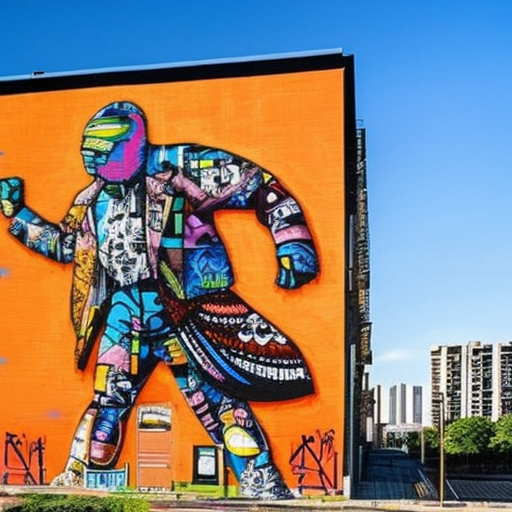Summary:
Street art is a form of artistic expression that takes place in public spaces, often using walls, buildings, and other urban structures as canvases. It emerged as a rebellious movement in the late 20th century and has since evolved into a recognized art form. Street art encompasses a wide range of styles and techniques, including graffiti, stenciling, murals, and installations. It serves as a means of self-expression, social commentary, and cultural preservation, challenging traditional notions of art and engaging with the public in unique ways.
History and Origins:
Street art has its roots in graffiti culture, which emerged in the 1960s and 1970s in cities like New York and Philadelphia. Graffiti writers used spray paint to leave their marks on subway trains and walls, often as a form of protest or to claim territory. Over time, graffiti evolved into a more elaborate and artistic practice, with artists developing their own styles and techniques.
In the 1980s, street art began to gain recognition as a legitimate art form. Artists like Keith Haring and Jean-Michel Basquiat brought their work from the streets to galleries, blurring the line between street art and fine art. This shift helped to legitimize street art and open doors for other artists to gain recognition.
Styles and Techniques:
Street art encompasses a wide range of styles and techniques, reflecting the diversity of the artists and their influences. Graffiti, the most well-known form of street art, involves the use of spray paint to create elaborate lettering and images. Stenciling is another popular technique, allowing artists to quickly reproduce images and messages using pre-cut stencils. Murals, often created with brushes and rollers, cover large areas and can be highly detailed and colorful. Installations, on the other hand, involve the use of three-dimensional objects and materials to create immersive experiences.
Themes and Messages:
Street art often serves as a platform for social and political commentary. Artists use their work to address issues such as inequality, racism, environmentalism, and gentrification. By placing their art in public spaces, street artists aim to engage with a wide audience and spark conversations about these important topics. Additionally, street art can also be a form of cultural preservation, celebrating local history and traditions.
Controversies and Legalities:
Street art has long been a subject of controversy, with some viewing it as vandalism and others as a legitimate form of artistic expression. Many cities have laws and regulations in place that prohibit or restrict street art, leading to the removal and destruction of artworks. However, there has been a growing recognition of the value of street art, with some cities creating designated spaces and legal walls for artists to showcase their work.
Impact and Influence:
Street art has had a significant impact on contemporary art and culture. It has challenged traditional notions of art and expanded the definition of what can be considered art. Street art has also influenced other art forms, such as graphic design, fashion, and advertising. In recent years, street art festivals and exhibitions have gained popularity, providing platforms for artists to showcase their work and engage with the public.
In conclusion, street art is a dynamic and diverse art form that has evolved from its rebellious origins to become a recognized and influential movement. It serves as a means of self-expression, social commentary, and cultural preservation, challenging traditional notions of art and engaging with the public in unique ways. Despite controversies and legal challenges, street art continues to thrive and make an impact on contemporary art and culture.












